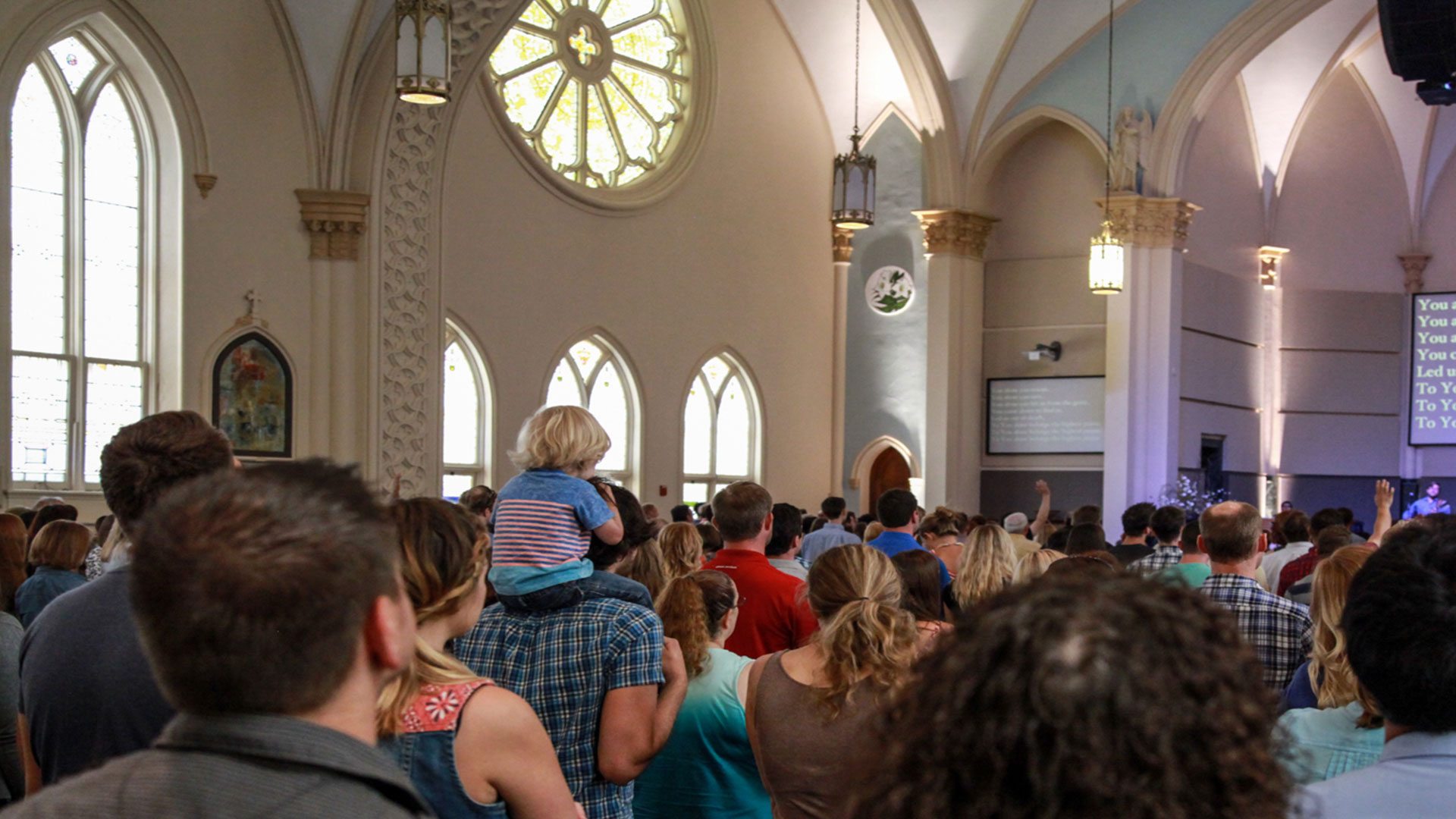
What is a church? The word is familiar to the average person, but quite a few different things come to mind when the word church is said. Often we use the word to refer to a building, whether or not the building is being used for “churchly” activities, such as, “The Boy Scout troop meets at the church tonight.” Sometimes the word is used to talk about the institutional structure of a network of religious bodies: “The church wielded enormous political and economic power in Medieval Europe.”
When people think about churches, they often think about programs, events, and leaders as the essential features. However, the New Testament uses the word church a lot, and never in any of these ways. Instead, the Bible consistently uses the word church to refer to an assembly of people.
This can even be an assembly of unbelievers, as in Acts 19:32 and 41, where the Greek word ekklesia refers to the assembly—or mob, as it were—gathered in the theater in Ephesus at the instigation of Demetrius the silversmith. The word is never used to designate a building in the New Testament, but rather a group of people. Specifically, a New Testament church is a group of believers in Jesus Christ who assemble together regularly and who are committed to one another to be the body of Christ together.
A New Testament church is a group of believers in Jesus Christ who assemble together regularly and who are committed to one another to be the body of Christ together.
Each of these features is essential.
A church is a group of believers in Jesus Christ.
There is no hint in the New Testament of churches that are a mix of saved and unsaved people. A group of people who are not born again is no church at all, whatever the sign on the door may say. Furthermore, in the Bible, the normal expression of faith in Jesus Christ was baptism. So, it is safe to say that a biblical local church is a group of baptized believers in Jesus.
The apostle Paul specifically uses the language of baptism to describe the activity of the Holy Spirit in incorporating a person into the church (1 Cor. 12:13). As we read the Book of Acts, evangelism and church planting go hand in hand. The early followers of Jesus went from place to place, shared the gospel, and led men and women to faith in Jesus. Churches resulted. You cannot have biblical disciples of Jesus who are not gathered in churches. And you cannot have biblical churches that are not comprised of believing disciples of Jesus.
A church assembles together regularly.
The very heart of the word for church is “assembly,” and believers in the New Testament era were exhorted and commanded not to neglect meeting together (Heb. 10:25). A church is not an abstract group of disconnected people but rather an assembly of believers who gather regularly to be and do church together. It has been the practice of Christian churches from the days of the New Testament to gather with one another on the Lord’s Day each week. Additionally, the picture we find of church life in the New Testament (living out the “one another” commands given by Jesus and his apostles) seems to indicate that they were involved in each other’s lives in between those weekly assemblies.
Churches meet, and they do so regularly.
A church is committed to one another to be the body of Christ together.
This is not a random and ever-shifting group of people. New Testament churches knew who was in and who was out of any given assembly. Otherwise, the instructions of Jesus in Matthew 18 and of Paul in 1 Corinthians 5 and 2 Corinthians 2 regarding church discipline make no sense at all.
The relationship between members of a local church is covenantal, whether they make it explicit through a formal written covenant or not. Paul actually compared the relationship between members of a church with the relationship (and essential interdependence) between different parts of a human body. The picture he painted in 1 Corinthians 12 is quite graphic. Every believer in the world needs the specific other believers whom God has placed in his or her local church as much as a finger or an eye or a foot in your physical body needs to remain connected to the rest of your body to survive.
We are to love one another, pray for one another, encourage one another, and build each other up. We are to teach and admonish one another, serve one another, submit to one another, and all of the other “one another” commands given to the church in Scripture. And we are to do these things to the specific, concrete fellow sinners who constitute our own local church. There is nothing casual about church membership. To be a member of a local church is to be committed to a group of other believers in Jesus to be and do everything the Bible describes as the life of the body of Christ. This is what a church is.
12 Characteristics of a Healthy Church
A local church is a group of believers in Jesus Christ who assemble together regularly and who are committed to one another to be the body of Christ together. This is the essential core of a church’s nature and identity. This is not, however, the full picture of the church in the New Testament. There are at least 12 characteristics of a healthy church that describe those things a church should practice. These are biblical evangelism, biblical discipleship, biblical membership, biblical leadership, biblical preaching and teaching, biblical baptism and the Lord’s Supper, biblical worship, biblical fellowship, biblical prayer, biblical accountability and discipline, biblical giving, and biblical mission. We will be exploring what these mean in the weeks ahead.
Zane Pratt is vice president of training for the International Mission Board.

